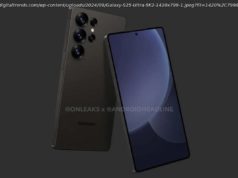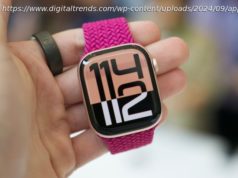The Panasonic Lumix DC-LX100 II is the long-awaited update to a popular premium point-and-shoot. Its biggest upgrade is resolution, but it also adds a touch LCD and Bluetooth.
It’s been about four years since Panasonic tipped the LX100, a point-and-shoot camera with a Micro Four Thirds image sensor and a bright, fixed zoom lens. In that time we’ve seen a surge in the number of competitors with physically smaller, but higher resolution image sensors, most notably the Sony RX100 and Canon G series. The Lumix DC-LX100 II ($999) doesn’t make a lot of changes on the outside—the lens and controls are the same as the first version. But its image sensor ups resolution from 12MP to 17MP, putting it more in line with the competition. We’ll know more when we get a chance to use it—the camera is set to go on sale in October. For now we have some initial details.
The LX100 II looks just like its predecessor. Available only in black, it measures 2.6 by 4.5 by 2.2 inches (HWD) and weighs 13.9 ounces. The body is fairly slim, but does include a hand grip—it makes the camera more comfortable to hold, and doesn’t extend past the lens. Still, the LX100 II is a little too bulky to be considered pocketable for most jeans or pants, but if you’re a fan of cargo shorts or wear a jacket with larger pockets, the camera can find a comfortable home in either.
The Micro Four Thirds sensor is about twice the size, in terms of surface area, than the 1-inch image sensors found inside most of the competition. The LX100 II’s sensor is a bit different from the standard, though—it’s a multi-aspect ratio design, which means that the amount of surface area used, and the image resolution, varies based on the aspect ratio you choose. You get the most, 17MP, when shooting at 4:3, and less at 3:2 (16MP), 16:9 (15MP) and 1:1 (12.5MP).
The lens is the same fixed 10.9-34mm f/1.7-2.8 optically stabilized zoom used by the LX100. In full-frame terms, it covers an angle view that’s roughly about the same as a 24-75mm zoom—the standard 2x conversion factor is a bit off here due to the LX100 II’s multi-aspect sensor design.
The original LX100 was also sold under the Leica banner as the D-Lux (Typ 109). We’ll see if the LX100 II gets the same treatment—my guess is that it will, and we’ll probably see it announced at Photokina. Leica often rebrands Panasonic cameras, but we see some of its influence when it comes to the design.
The LX100 II’s controls are more Leica than Panasonic in concept. The lens has a physical aperture ring, with an A position for automatic control and manual settings from f/1.7 through f/16. The lens also sports a manual focus ring and a switch to change between the different aspect ratios at its top, and another switch to change between autofocus, manual focus, and automatic macro focus on its side.
On the top plate you’ll find a hot shoe for the included add-on flash—the LX100 II omits an in-body strobe. It’s joined by a shutter speed dial just to its right, with the On/Off switch nested to the right of that. The shutter release is in the expected position at the center of the zoom rocker. There are also two control buttons—iA, which toggles the Intelligent Auto shooting mode, and the programmable Fn1—as well as a dedicated dial to set EV compensation. The EV dial supports +/-3EV adjustment in third-stop increments.
On the back you’ll find the EVF at the top left corner, complete with an eye sensor and diopter adjustment dial. The Fn5 button that sits directly to its right is programmable, but switches between the viewfinder, rear display, or automatic switching by default. It’s joined by Fn4, Record, and AF/AE Lock, all running in a row along the top of the LCD.
There is a small thumb rest at the top right corner. Below it is Fn2, which activates the on-screen Q. Menu by default, and Play. The rear control wheel occupies the space directly below them. The flat dial turns continuously and also supports presses in the four cardinal directions. Starting with the up position and moving clockwise, they adjust ISO, White Balance, Drive/Self-Timer, and Focus Area. Below that are Fn3 (Delete) and Display.
The rear LCD is fixed. I would have preferred to see Panasonic add some sort of tilting capability, but that’s not the case. It is touch sensitive and ample in size and resolution. At 3 inches it dominates the rear of the svelte LX100 II, and is sharper than the LX100’s 921k-dot LCD, increasing resolution to 1,240k dots.
The EVF is also solid. It boasts 0.7x magnification—not as large as you get on premium mirrorless models, but plenty big for a compact camera—with 2,784k dots of resolution. It’s an OLED design, which is the de facto standard for modern EVFs. I haven’t had a chance to use it in the field, so I can’t say if color tearing when panning is an issue as it is for EVFs that use field sequential display technology, but will check it out when I’m able to use the LX100 II in the real world.
The camera includes both Bluetooth and Wi-Fi. The former works with the new Bluetooth remote control that Panasonic is marketing along with the LX100 II. It’s not included, but is available as an accessory—Panasonic doesn’t have pricing for it at press time. Wi-Fi allows you to copy images to your Android or iOS device, and use your phone as a remote control, complete with a live feed. The memory card slot is the standard SD/SDHC/SDXC type used by almost every consumer camera.
I haven’t had a chance to shoot with the LX100 II, so I’m not able to speak extensively as to its speed or image quality. We do know that it can shoot at 11fps with locked focus or at 5.5fps while tracking subjects, but how effective the latter is in keeping focus accurate is a question mark.
You also get Panasonic’s 4K Photo mode for quicker capture, albeit with either locked focus on a subject or in a mode that changes the focus point between each shot, useful for macro focus stacking but not that great for subject tracking. The 4K Photo mode shoots at 30fps, but only in 8MP JPG format. That’s a far cry from the 17MP Raw images you can get at 11fps.
nocaption align=“left“> See How We Test Digital Cameras
The image sensor is the same one used in the GX9. It’s 20MP in resolution and omits the optical low pass filter (OLPF) from its design to maximize detail.






